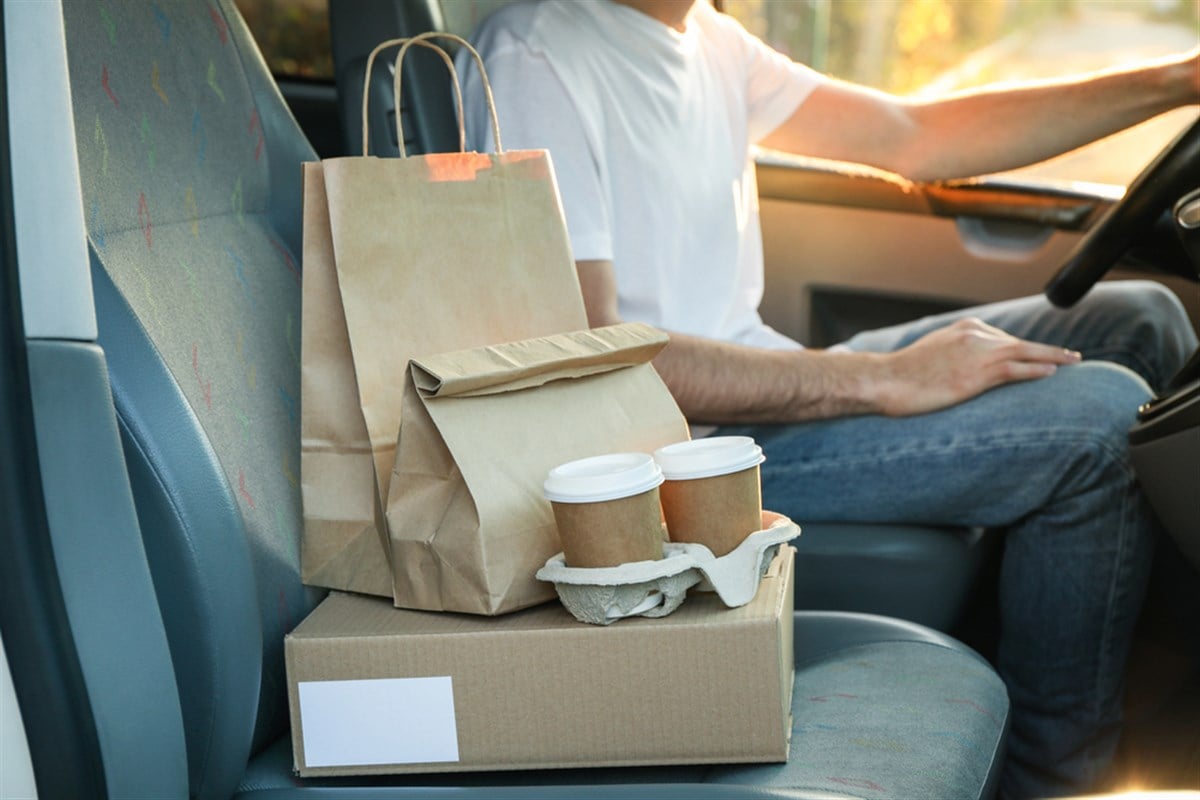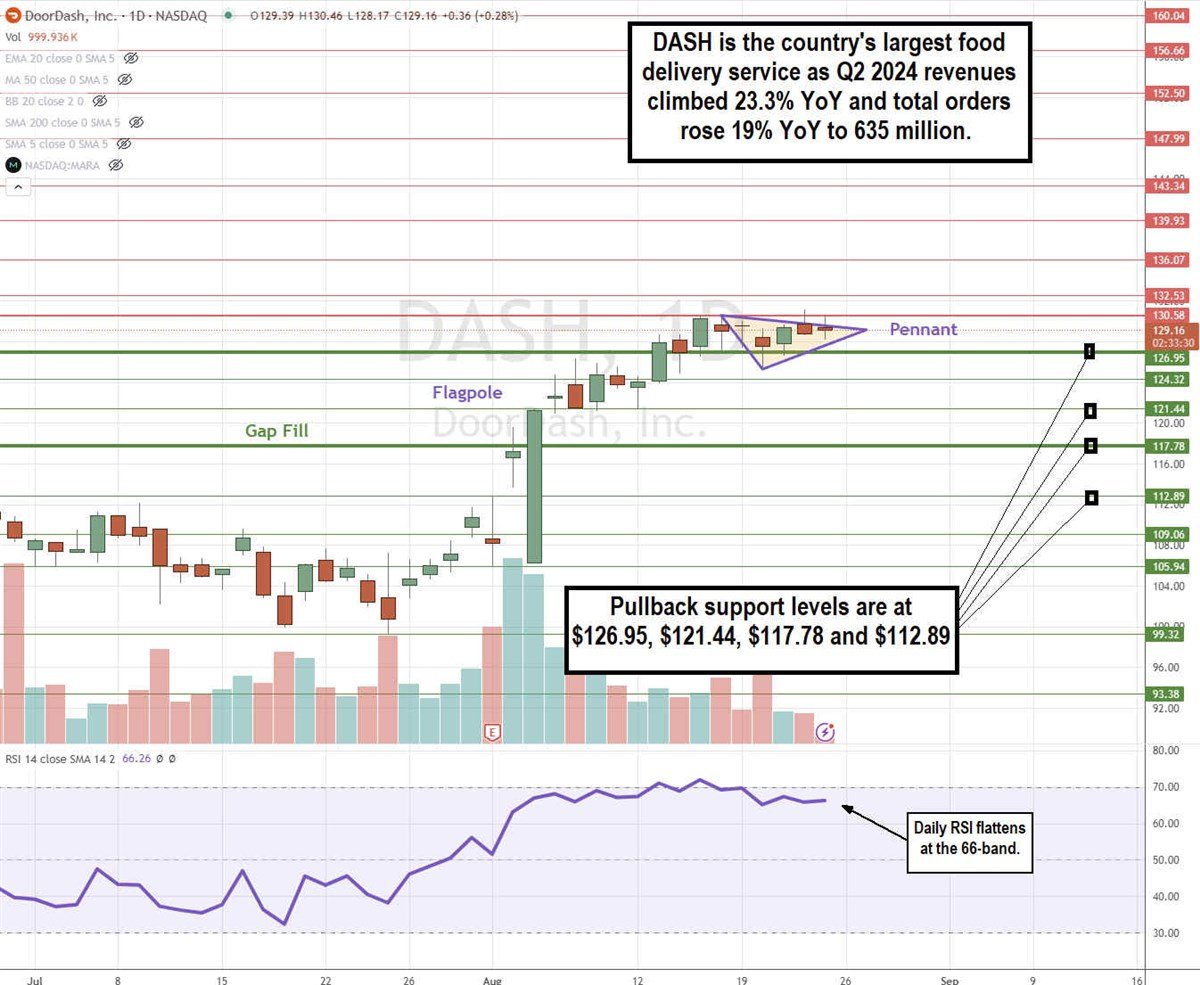
DoorDash Inc. (NASDAQ: DASH) is the largest food delivery platform in the United States, with over 550,000 restaurants and grocery stores in its network. Like Uber Technologies Inc. (NYSE: UBER), DoorDash plays the role of the middleman connecting local restaurants with customers and Dashers (delivery drivers) to deliver the food. DoorDash has also expanded its deliveries to include groceries, clothing, make-up, mattresses, and more than two million products.
DoorDash has mastered the art of compelling. They compel new restaurants to join their growing network. They compel DashPass subscribers to increase the frequency of their orders to maximize their savings on delivery charges. They are compelling investors to take a second look at the company as it continues to set records even after the pandemic.
DoorDash operates in the computer and technology sector, competing with Uber Eats, Maplebear Inc. (NASDAQ: CART), Instacart Inc., and Amazon.com Inc. (NASDAQ: AMZN).
Leveraging AI Data to Edge Out Competitors
As the largest delivery network, DoorDash has the advantage of scale and data. The company uses artificial intelligence (AI) and machine learning models. DoorDash has been using its AI-powered prediction service, Sybil, to generate large-scale predictions about restaurant demand and help allocate Dashers to ensure lower wait times and faster delivery for customers.
They use AI to optimize delivery routes for their Dashers, considering distance, traffic and order complexity to predict delivery times and ensure efficiency. DoorDash uses AI to analyze customer data, including preferences and order history, to offer personalized recommendations to enhance customer experience. AI also powers fraud detection and voice ordering.
DoorDash Is Spawning a Must-Have Network
DoorDash has grown so large and dominant that restaurants feel compelled to join the network to compete and have delivery options available for their customers. DoorDash has evolved from being an add-on convenience option to a must-have service to not only provide delivery options to customers but also to gain publicity and awareness with customers using the DoorDash app.
DoorDash Is a Market Maker
It’s a case where competitors are in the DoorDash network, so new restaurants are compelled to join the network just to even the playing field and compete to stay relevant. DoorDash has the additional ability to derive advertising revenues as the market maker middleman to provide the equivalent of “order flow” agreements like the electronic brokers on the stock market. DoorDash pitches that it can help restaurants grow their business and make more sales from its network.
Building Several Revenue Funnels
DoorDash derives revenues from three main funnels. The marketplace fees comprise 80% of total revenues, including the service and delivery fees for each order. Subscription fees from its DashPass service, offering free delivery, promotion, and reduced service fees, generated nearly 13% of total revenues. It’s worth noting that DashPass costs less than $100 a year but can generate savings of up to $5 per order. Customers tend to order more to maximize the value of their money with the subscription. Advertising and promotions generate around 7% of total revenues.

DASH Stock Forms a Pennant Pattern
The daily candlestick chart for DASH illustrates a pennant pattern. Like a flag pattern, a pennant forms following a sharp run-up called a flagpole. The flagpole peaked at $130.58, which is the resistance level and breakout trigger. The $126.95 is the upper gap fill. The daily relative strength index (RSI) fell under the 70-band but has continued to move sideways around the 66-band. Pullback support levels are at $126.95 gap fill, $121.44, $117.78 lower gap fill, and $112.89.
Solid Adjusted EBITDA Growth
DoorDash reported Q2 2024 adjusted EBITDA growth of 54% YoY to $430 million, coming in above the $325 million to $425 million earlier guidance. While its EPS loss was 38 cents and may have missed consensus estimates for a loss of 9 cents, the market is more focused on its adjusted EBITDA. Total orders for the quarter rose 19% YoY to 635 million. Marketplace gross order volume (GOV) jumped 20% YoY to $19.7 billion, comfortably beating previous estimates of $19 billion to $19.4 billion. DoorDash added tens of thousands of new businesses in the quarter and reduced the average order defect rate.
Raising GOV Guidance
DoorDash expects Q3 2024 GOV to be between $19.4 billion and $19.8 billion. Adjusted EBITDA is expected to grow from $470 million to $540 million.
DoorDash CEO Tony Xu commented during the conference call, “We continue to see just tremendous growth, much faster than the industry, I mean, many, many, many fold faster than anyone else, both in the U.S. as well as globally in restaurants, but also outside of restaurants. And increasingly, we’re seeing customers come to us for the first time actually for non-restaurant use cases.”
DoorDash analyst ratings and price targets are at MarketBeat. There are 29 analyst ratings on DASH stock, comprised of 18 Buys and 11 Holds. Consensus analyst average price targets point to $141.93.














